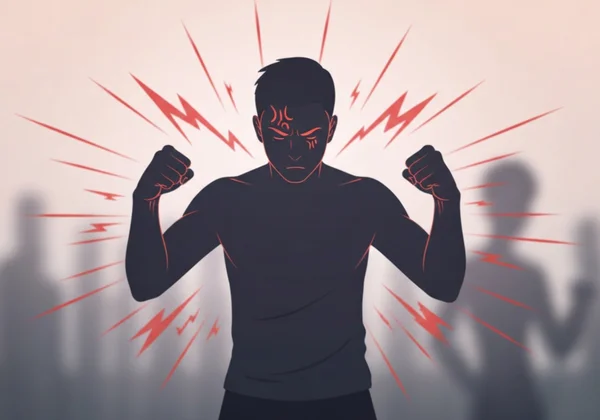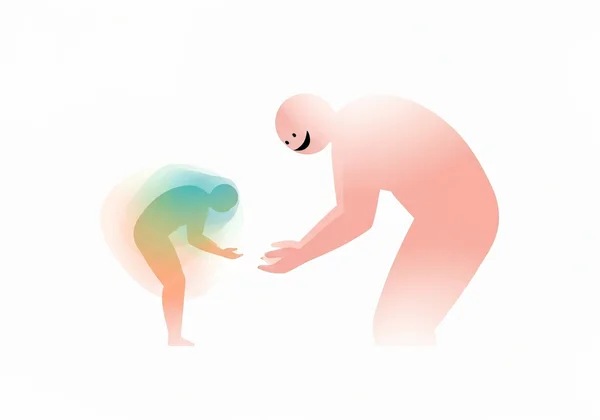The 4 Fs of Trauma: How They Relate to a PTSD Test & Your Results
Feeling overwhelmed by stress reactions – anger, the urge to escape, shutting down, or constantly pleasing others – without understanding why? These aren't personal failings, but your body's deeply ingrained trauma responses. This guide will demystify the 4 Fs of Trauma – Fight, Flight, Freeze, and Fawn – helping you understand these powerful, automatic reactions. Recognizing them is a crucial first step on your healing journey. If you're asking yourself, do i have ptsd test?, understanding these responses can provide profound clarity.

Understanding the 4 Fs of Trauma: A Key to Your PTSD Self-Assessment
The 4 Fs are not conscious choices; they are instinctual survival strategies hardwired into our nervous systems. When faced with a perceived threat—whether it’s a physical danger or a deeply emotional trigger—our bodies react faster than our minds can process. This automatic response system is designed for one purpose: to keep us safe. Understanding where these reactions come from is the first step toward compassion for yourself and your experiences.
The Biological Roots of Your Body's Protection System
At the heart of these responses is your autonomic nervous system. When it detects danger, it triggers a cascade of hormones like adrenaline and cortisol, preparing you to survive. This isn't a modern psychological theory; it's a primitive survival mechanism that has protected humans for millennia. Your body is simply trying to protect you in the only way it knows how. This reaction is instantaneous, powerful, and entirely outside of your conscious control in the moment.
PTSD Responses vs. Everyday Stress: How a PTSD Screening Test Can Help
Everyone experiences stress, but a trauma response is different. While everyday stress might make you feel worried or tense, a trauma response can feel disproportionate to the current situation because it's being triggered by a past event. A minor disagreement might trigger an intense "fight" reaction, or a crowded room could activate a "freeze" response. If these patterns feel familiar, exploring them with a confidential PTSD test can be an insightful and validating next step.
The Fight Response: Confronting Perceived Threats
The Fight response is an aggressive defense mechanism where you move toward the threat to confront it. This isn't just about physical altercations. It's an internal state of mobilization that primes you to push back against what feels dangerous or unjust. While this response can be life-saving in a real crisis, it can become disruptive when it’s chronically activated by emotional triggers from past trauma.

How Fight Manifests in Daily Life and Relationships
In daily life, a fight response can look like explosive anger, irritability, or a constant need to be in control. You might find yourself arguing frequently, being overly critical of others, or feeling a persistent, simmering rage just beneath the surface. In relationships, this can lead to conflict and push others away, even when you crave connection.
When Anger and Control Become a Trauma Reaction
If your fight response is a trauma reaction, you might find yourself using anger as a shield. Control feels like the only way to ensure safety. This isn't because you are an "angry person," but because your nervous system is stuck in a state of high alert, constantly scanning for threats and ready to neutralize them. Recognizing this pattern is key to learning new ways to feel safe.
The Flight Response: Escaping Overwhelming Situations
The Flight response is about creating distance from a perceived threat. It’s the overwhelming urge to run, escape, and avoid. When this survival instinct is triggered by past trauma, it can manifest as a constant need to stay busy, a fear of staying still, and an inability to relax. It’s a state of perpetual motion driven by an underlying anxiety that danger is always near.
Common Signs of Flight: Avoidance, Restlessness, and Anxiety
Signs of a flight response include chronic anxiety, panic attacks, and a feeling of being constantly on edge. It can manifest as workaholism, obsessive behaviors, or an inability to commit to relationships or plans. You might feel restless, fidgety, and unable to settle down because stillness feels unsafe. Your body is telling you to flee, even when there's no visible danger.
The Difference Between Flight and Healthy Boundaries
Setting healthy boundaries is a conscious choice to protect your well-being. The flight response, however, is a compulsive avoidance driven by fear. While both create distance, boundaries come from a place of self-respect, while the flight response comes from a place of terror. If you struggle to tell the difference, an online ptsd self test can help you explore the underlying patterns.
The Freeze Response: Becoming Paralyzed by Fear
Perhaps the most confusing response is Freeze. This is when your nervous system, overwhelmed by the threat, simply shuts down. You may feel paralyzed, unable to move or speak, as if you’ve disconnected from your body and the world around you. This response is common when fighting or fleeing isn't an option.
Understanding Dissociation and Numbness as a Trauma Reaction
Dissociation is a core component of the freeze response. It can feel like you’re watching your life from outside your body or that things around you aren't real. Numbness, both physical and emotional, is another key sign. It’s your body’s way of protecting you from pain that feels too overwhelming to experience.
"Playing Dead": When Your Body Shuts Down
Think of the freeze response as your body "playing dead." It's a primitive strategy to make the threat lose interest. In modern life, this can look like an inability to make decisions, feeling "stuck" in life, or having difficulty accessing your emotions. You might feel tired all the time, isolated, and disconnected from others.
The Fawn Response: Seeking Safety Through People-Pleasing
The Fawn response, a term coined by therapist Pete Walker, is a less-known but equally important trauma reaction. It involves trying to appease a threat by becoming helpful, agreeable, and compliant. This response is often developed in childhood in response to a caregiver who was frightening or unpredictable. The child learns that their safety depends on keeping the powerful person happy.

Identifying Fawning Behaviors and Their Impact on Self-Worth
Fawning manifests as chronic people-pleasing, an inability to say "no," and a loss of one's own identity. You might constantly anticipate the needs and feelings of others while ignoring your own. This can lead to deep feelings of resentment, burnout, and a fragile sense of self-worth that is entirely dependent on external validation.
Breaking the Cycle of People-Pleasing and Poor Boundaries
The fawn response means you often betray yourself to stay connected to others. Healing from this response involves learning to set boundaries, identify your own needs and feelings, and understand that you are worthy of love and respect without having to earn it through service.
How Understanding the 4 Fs Empowers Your Healing Journey
Simply learning about these four trauma responses can be a profoundly healing experience. It provides a new language to understand your past and present reactions. This knowledge is not about labeling yourself; it’s about liberating yourself from confusion and shame, paving the way for intentional healing and recovery.
Validating Your Experiences and Reducing Self-Blame
For years, you may have blamed yourself for being "too sensitive," "too angry," or "too passive." Understanding the 4 Fs helps you see that these were not choices, but survival instincts. Your body did what it had to do to protect you. This realization can lift a heavy burden of self-blame and allow self-compassion to grow.
Your Next Step: Self-Assessment and Seeking Support
If these descriptions have resonated with you, the next step is to explore them further in a safe and structured way. Gaining clarity on your specific symptoms and patterns is a powerful move toward regaining control. A great place to start is with a free trauma assessment that can provide immediate, confidential insights into your experiences.
Empowering Your Journey: What to Do After Your PTSD Test
Understanding the 4 Fs of Trauma – Fight, Flight, Freeze, and Fawn – marks a powerful first step toward reclaiming your life from the grip of past events. These are not weaknesses but a testament to your resilience and your body's profound drive to survive. By identifying which responses resonate with you, you gain clarity, shed the burden of self-blame, and open the door to healing.
If reading about these trauma responses feels deeply familiar, taking a confidential PTSD self-assessment can be a crucial next step. Visit our site today for immediate, free insights into your symptoms and explore your personalized path toward understanding and recovery.
Frequently Asked Questions About Trauma Responses & PTSD
How do I know if my reactions are trauma responses or just everyday stress?
Everyday stress is typically tied to a current, identifiable stressor and resolves when the situation does. Trauma responses often feel much larger than the current trigger, are deeply rooted in past events, and can persist long after the situation has passed, creating recurring patterns of behavior like intense anger or avoidance.
Can understanding the 4 Fs help me identify if I have PTSD?
Yes, it can be a significant clue. PTSD involves a cluster of symptoms, and the 4 Fs describe the behavioral and emotional reactions that are often part of that cluster. If you consistently identify with one or more of the Fs as a response to triggers, it may indicate that your symptoms align with those of PTSD.
What are the main signs of PTSD often linked to these survival responses?
Beyond the 4 Fs, core signs of PTSD include intrusive memories or flashbacks, nightmares, avoiding reminders of the trauma, negative changes in mood and thinking, and being easily startled or always on guard. These symptoms are your nervous system's way of trying to process and protect you from the past trauma.
How accurate are online PTSD tests for understanding my trauma responses?
Reputable online PTSD tests, especially those based on clinical standards like the PCL-5, can be a highly accurate and valuable first step. While they cannot provide a formal diagnosis, they offer a confidential, accessible way to screen for symptoms, validate your experiences, and provide the clarity needed to seek professional support. Taking an online PTSD screening can be an empowering way to begin your journey.